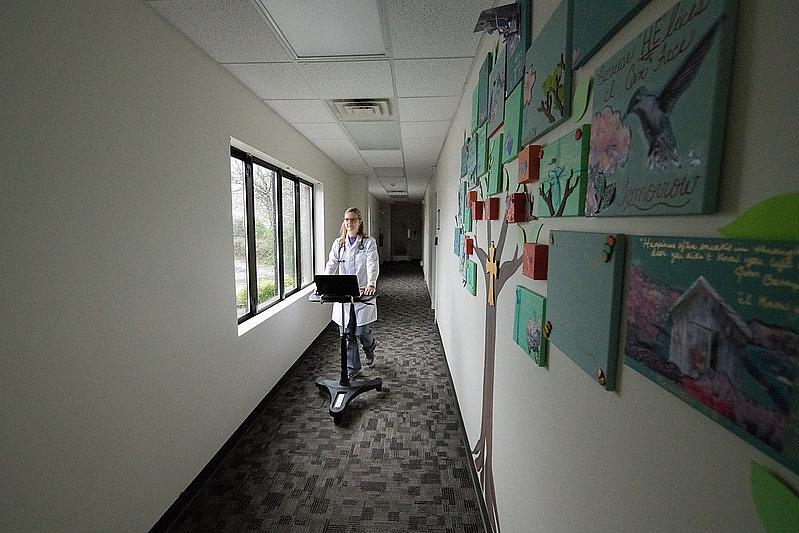Digital systems can fail patients — here’s how

(Photo by USDA via Flickr)
COVID-19 has put the spotlight on health care data like no other public health crisis. One of the untold stories certainly to emerge is how electronic health record (EHR) systems held up during the pandemic.
These are the digital systems providers use to store and manage patients’ medical records, now that paper records are increasingly a relic of the past.
This isn’t a story about how we count COVID-19 infections and deaths. It’s about how the electronic health records that are now the backbone of health care systems everywhere have either helped or harmed the COVID-19 response.
Here are a few things to look for.
Malfunctioning systems leading to medication errors. In Tucson, a kidney transplant patient complained to the state that a hospital’s EHR system created an error that led to a change in how much of the blood thinner heparin he received. The patient, David Christiansen, told Stephanie Innes at the Arizona Daily Star:
“I was bleeding internally because the new (computer) program did not calculate heparin dosage as the old program had done and the nurses were unprepared for this.”
Innes documented problems with the Banner Health System’s switch to a new EHR system, using complaints to state health authorities and records from the state health department. You can track similar issues that undoubtedly have arisen in recent months in your coverage area.
Hybrid systems leading to critical issues being missed. Researchers reviewed hundreds of malpractice claims and determined that one of the culprits at the heart of them was the inability of the health system in question to commit to one system. This makes sense. You may work in an area where the health system barely makes a profit or even loses money year over year. The thought of making a $50 million investment in a new EHR system would be unfeasible. So they pinch pennies and they patch in small fixes here and there to existing systems. They may be slow to convert from a paper system to an electronic system. Or they may spend years trying to bridge two electronic systems. That can lead to electronic snafus that harm patients. Some of the examples the researchers found and published in the Journal of Patient Safety in June 2019 included:
-
A patient suffering unnecessary heart complications because his medication list was not accurately entered from a paper system into an EHR. “The EHR did not list medications from the prior admission and did not interface with the inpatient unit,” the authors wrote.
-
A patient’s colon cancer diagnosis being delayed. (Early detection can be crucial.)
-
A pediatric patient receiving a dose of ampicillin — despite a known allergy to the drug. The allergy ”had been documented in the paper record but not uploaded into the EHR.”
Poor training leading to bad decision-making. Even when these electronic records systems are designed well and functioning correctly, the people using the systems need to have the right training to make them work for providers and for patients. The same study in the Journal of Patient Safety found repeated problems that could have been solved with better training:
-
An obstetrician was unable to gain access to a patient’s clinic notes, which documented that the mother’s fetus was of an abnormal size. “The clinician stated he/she never received training or a password.”
-
Even when an EHR system correctly alerted a physician to the fact that a patient was allergic to amoxicillin, the physician misread the alert and ordered the medication. The dose led to the patient having an allergic reaction.
-
Staff treating a patient with amiodarone did not correctly copy notes from a previous note, leading the patient to receive too much of the medicine and resulting in amiodarone toxicity.
-
Critical time was lost in treating a patient for a life-threatening illness (clostridium dificile) because the positive test results for the disease were unnoticed in the records system for a full week.
As you can see, the stories that can come out of EHR failures and staff oversight cover all sorts of health problems. As hospital staffs are overwhelmed with the COVID-19 surge in cases coast to coast, it’s worth investigating whether such errors are increasing in the health systems you cover. Take the time now to start documenting the problems to help your audiences have a better understanding of the crisis and how it is being managed.

